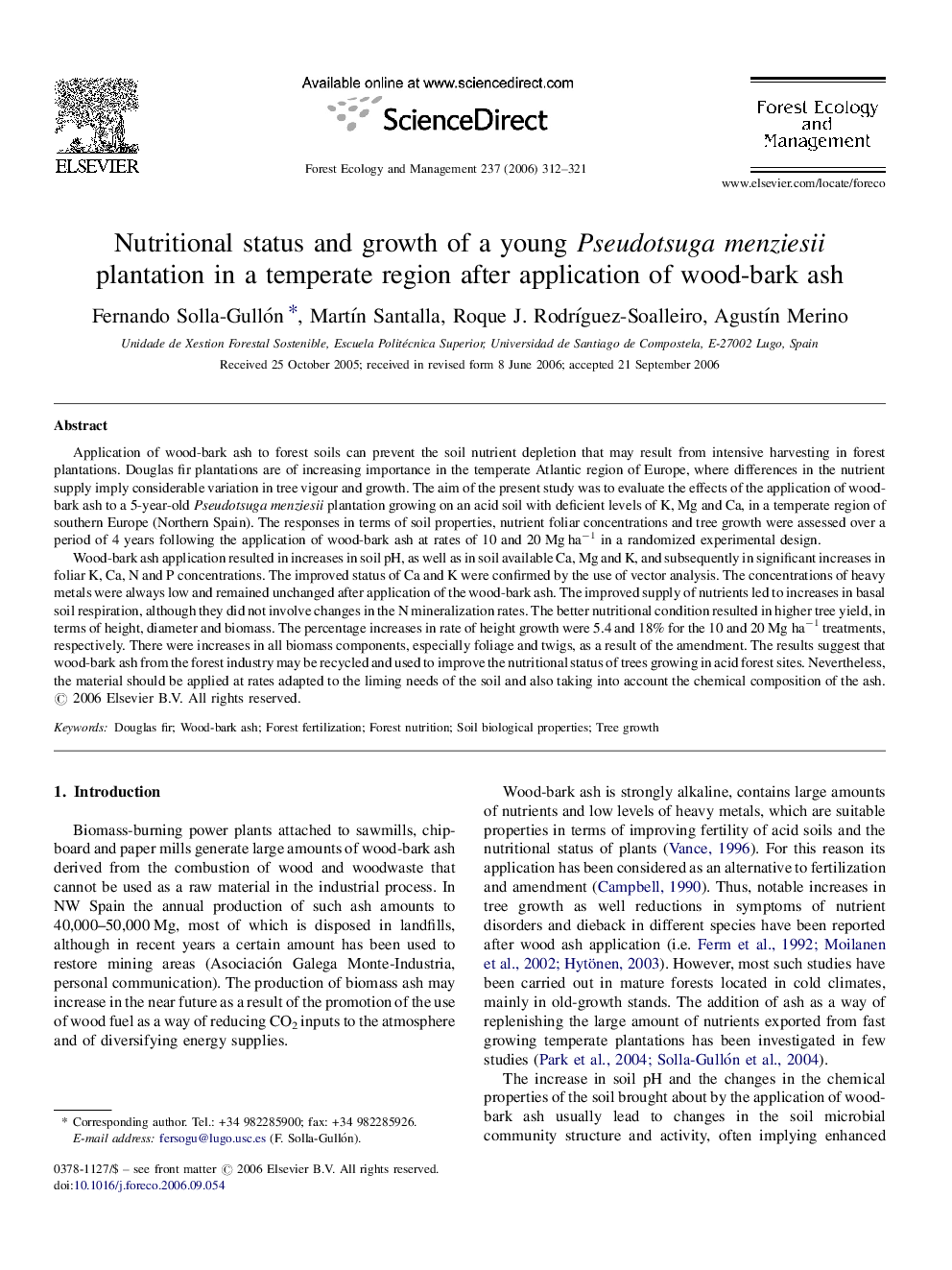| کد مقاله | کد نشریه | سال انتشار | مقاله انگلیسی | نسخه تمام متن |
|---|---|---|---|---|
| 89962 | 159360 | 2006 | 10 صفحه PDF | دانلود رایگان |

Application of wood-bark ash to forest soils can prevent the soil nutrient depletion that may result from intensive harvesting in forest plantations. Douglas fir plantations are of increasing importance in the temperate Atlantic region of Europe, where differences in the nutrient supply imply considerable variation in tree vigour and growth. The aim of the present study was to evaluate the effects of the application of wood-bark ash to a 5-year-old Pseudotsuga menziesii plantation growing on an acid soil with deficient levels of K, Mg and Ca, in a temperate region of southern Europe (Northern Spain). The responses in terms of soil properties, nutrient foliar concentrations and tree growth were assessed over a period of 4 years following the application of wood-bark ash at rates of 10 and 20 Mg ha−1 in a randomized experimental design.Wood-bark ash application resulted in increases in soil pH, as well as in soil available Ca, Mg and K, and subsequently in significant increases in foliar K, Ca, N and P concentrations. The improved status of Ca and K were confirmed by the use of vector analysis. The concentrations of heavy metals were always low and remained unchanged after application of the wood-bark ash. The improved supply of nutrients led to increases in basal soil respiration, although they did not involve changes in the N mineralization rates. The better nutritional condition resulted in higher tree yield, in terms of height, diameter and biomass. The percentage increases in rate of height growth were 5.4 and 18% for the 10 and 20 Mg ha−1 treatments, respectively. There were increases in all biomass components, especially foliage and twigs, as a result of the amendment. The results suggest that wood-bark ash from the forest industry may be recycled and used to improve the nutritional status of trees growing in acid forest sites. Nevertheless, the material should be applied at rates adapted to the liming needs of the soil and also taking into account the chemical composition of the ash.
Journal: Forest Ecology and Management - Volume 237, Issues 1–3, 15 December 2006, Pages 312–321